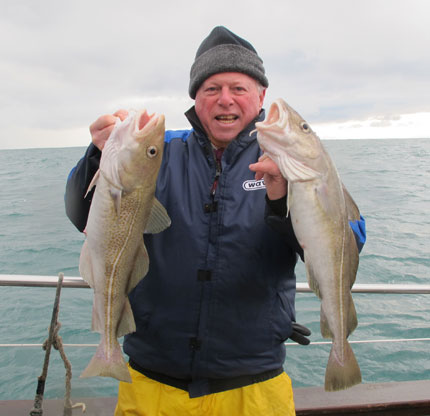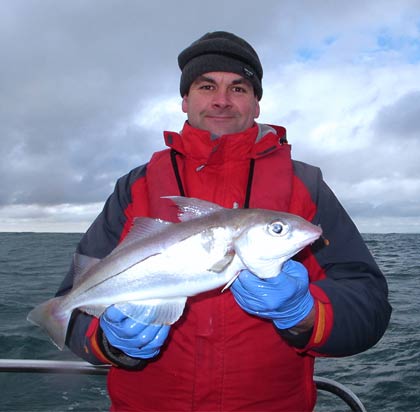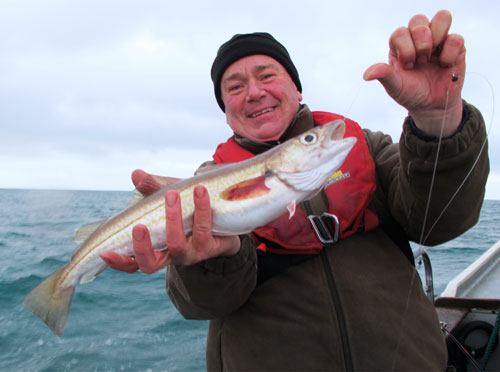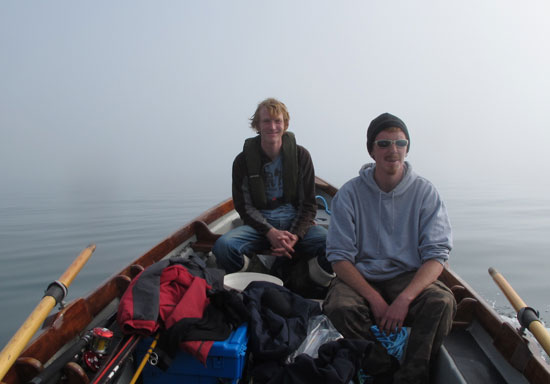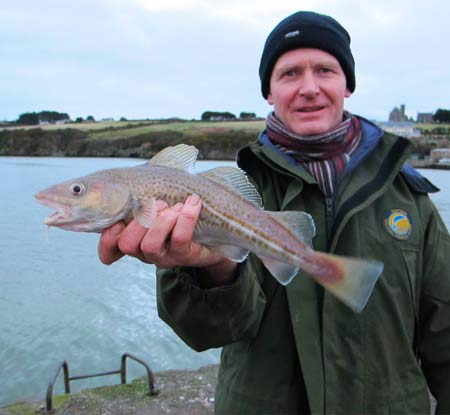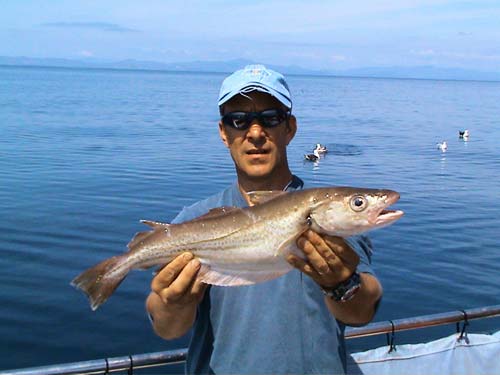Picturesque, historic, beautiful Kinsale, situated on the Bandon river estuary eighteen miles south of Cork city, more noted today for gastronomic excellence, has a tourism sea angling tradition which predates its modern culinary fame. Back in 1964 after returning from working in the USA and Canada, native Irishman Gary Culhane decided to create a tourist sea angling centre modeled on the hunting and fishing lodges he had experienced while on his travels. A visionary, Gary not only earmarked good fishing as a requirement, but also extra curricular activities and amenities suitable not just for all male angling parties but families too. The peaceful coastal haven of Kinsale giving access to both the incredibly fish rich and diverse Ling Rocks grounds and the wreck of the Lusitania lying eleven miles south west of the Old Head of Kinsale fitted the bill admirably.
Gary had two boats commissioned and built for offshore work and also hired dinghies and outboards for those customers who preferred to go it alone and fish the inner harbour and estuary. He constructed a wooden chalet and also provided space for caravans on the site which is now the Trident Hotel. Working in conjunction with Des Brennan of the Inland Fisheries Trust he invited journalists such as Clive Gammon to sample and write about what Kinsale had to offer tourist sea anglers, with the result that they came in their droves, in particular from Holland and the UK.
Back then common skate could be caught in the outer harbour and also turbot which swam and fed in the race off the Old Head. The Ling Rocks gave access to superb mixed fishing for a vast range of species to include big cod, pollack, whiting, coalfish, ling, gurnard, conger, and blue shark. Presently they still hold the rod and line record for thornback ray of thirty seven pounds, caught by M.J Fitzgerald on the 28/05/1961, a weight which will probably never be beaten. Traveling on out to the Lusitania initial forays produced big catches of specimen ling. This incredible marine diversity linked in with Kinsale and the surrounding hinterlands natural beauty, charm, and ambiance became the catalyst for a sea angling tourist product that at its height maintained a fleet of six deep sea charter boats.
Unfortunately today, like many sea angling centers around the Irish coastline, Kinsale trades on its past. As a teenager in the seventies I was drawn to the town, initially on a youth hosteling trip with the school, then captivated by its location, how it resembled a Cornish fishing village, and of course its famous pubs such as The Spaniard, Bullman, and Hole in the Wall, on most bank holidays from then until the early 1980′s yours truly would be found resident. Camping around Charles Fort, a wonderful star shaped 17th century structure now preserved by the OPW, fishing other than for mackerel was secondary to girls, drink, and craic. That said, if one took a late afternoon stroll up to the Trident Hotel of an August bank holiday a regular sight would be large blue sharks strung up on a gantry. A sad legacy to ignorance, but it has to be said, we didn’t know any better then.
So full circle and a call last week to Mike Hennessy, Inland Fisheries Ireland’s sea angling maestro. In conversation Mike told me about the fabulous haddock fishing he experienced the previous weekend out with skipper Butch Roberts off Kinsale. Letting Mike know that I had never fished out of the venue, “in fifty two years a major personal oversight“, he said “leave it with me”, hung up and two minutes later rang back saying a party was heading out with Butch next Saturday and I was welcome to join them. Three days later at 08.30am on a cold, grey, dismal morning I hopped aboard Butch Roberts 38 foot Aquastar named Sundance Kid and made my introductions to both him and the anglers present.
A mixed party, immediately I felt welcome, there was Dubliner Nick Ward, two knowledgeable anglers from the Cork City based Carrigaline Sea Angling Club Rob Porter and John Dennehy, and John “forever” Young, a Scotsman who sailed his yacht into Kinsale over a dozen years ago and never left. Preparing tackle as Butch guided Sundance Kid clear of the Castle Park Marina before steaming up the estuary past the twin bastions of Charles and James forts, our skipper then set a south easterly course out into the open ocean to a mark where hopefully the haddock would still be present.
Six miles south east of the Old Head of Kinsale charter boat Sundance Kid pitched and rolled under a dirty grey sky. The sea, still heaving after Thursdays gale, had thankfully settled enough for the 38 foot Aquastar to leave harbour, force eight south easterlies being replaced by a steady north east breeze pushing occasional wintry squalls ahead of it. Blowing at a slight angle off the land its effect was to flatten the sea somewhat, although in reality a short chop now became superimposed on a heavy swell, safe but uncomfortable. Baiting up with frozen razor clam and slivers of mackerel we lowered our rigs 100 feet towards a clean bottom of shale.
Instantly John Dennehy’s rod signaled bites which resulted in a brace of plump whiting, a false dawn as things went quite after that. Skipper Butch instructed lines up and we motored to another mark close by where he dropped anchor just as the tide was beginning to push west. To the north east I could make out Roche’s Point, while to the north west obscured by a sleety squall one could just make out the Old Head of Kinsale. Every so often we would dip into a trough and land would disappear, that’s the kind of day it was. Butch, Captain Ahab like with his beard, oozing sea going experience from South Africa, his native land, to Australia, was a constant source of reassurance. He’s been fishing these waters since he first came to Kinsale in 1984. What attracted him, “a woman of course”.
For an hour as the tidal flow increased bites came slowly but steadily, haddock made an appearance with Nick landing a grand four pound fish while John Young boated a brace of nice codling. Top rod for the day was Rob Porter, employing a two up one down rig laced with beads he regularly contacted haddock and large whiting, with his fish of the day being a ling in the eight to ten pound bracket. Best fish of the trip turned out to be a specimen red gurnard of 2.2 lbs caught by a rightly chuffed John Young, and I was delighted to see a number of big whiting landed, Kinsale at one stage home to the Irish record.
At days end motoring back in conversation with John Dennehy about the quality of sea fishing off the Cork coast, what he described gave hope. Yes, based on historic catches sea fishing has diminished with species overall smaller in size and less common. That said he and his friends fishing regularly throughout the year catch not only a range of species but fish to a good weight also. What I witnessed aboard Sundance Kid at the tail end of the season on a rough, cold day, backed up John’s narrative. Not a lot of fish were boated, that most definitely being down to the conditions, however codling to four pounds, whiting close to if not over two pounds, haddock averaging a pound and a half, a couple of good ling and a specimen gurnard in this day and age represents quality fishing. What might be achieved in the high season with good weather I intend to find out, roll on next summer.
Fact file: Charter boat, Sundance Kid. Skipper, Butch Roberts. Telephone: +353 (0)21 4778054. Email: info@anglingkinsale.com. Website: www.anglingkinsale.com


